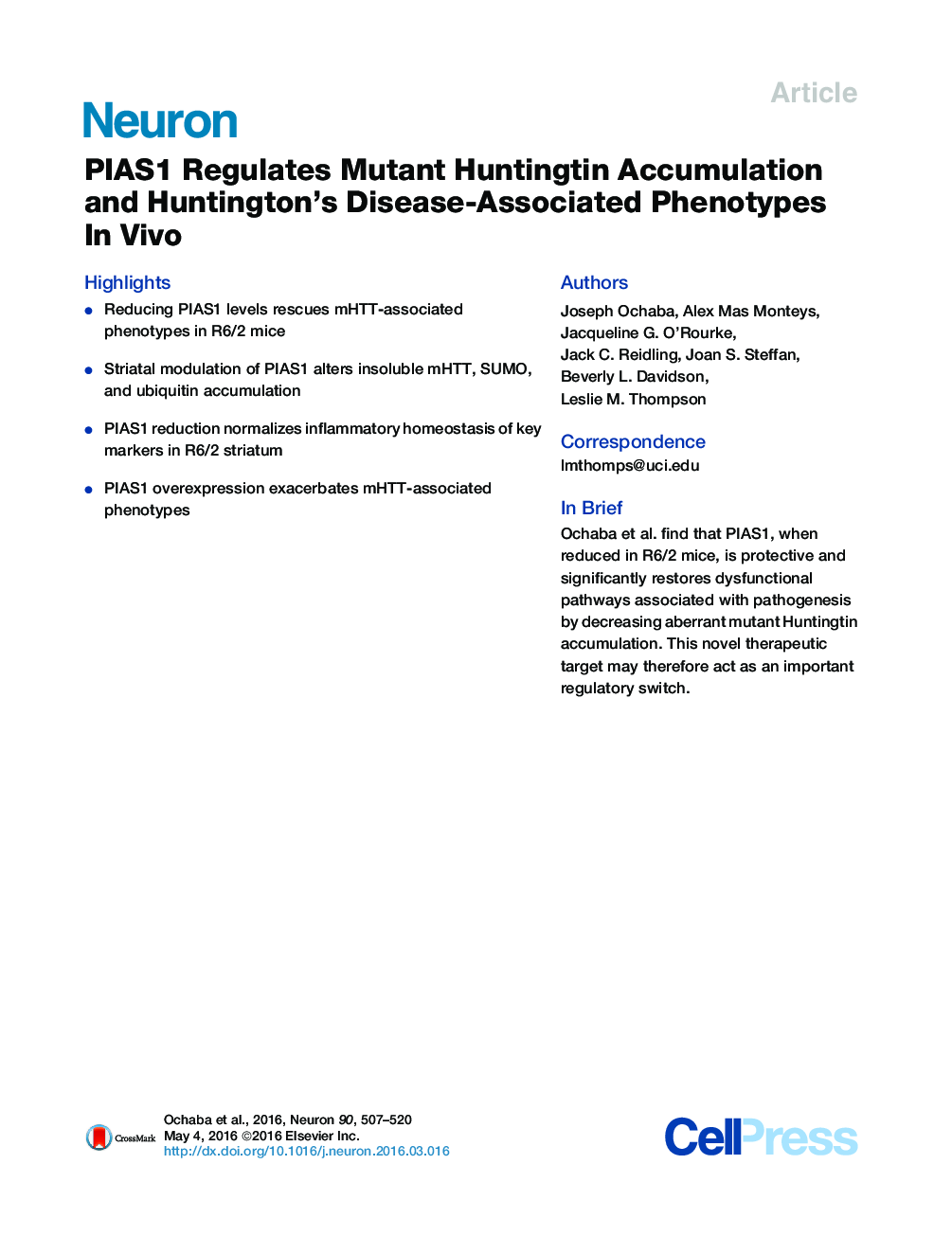| Article ID | Journal | Published Year | Pages | File Type |
|---|---|---|---|---|
| 4320705 | Neuron | 2016 | 14 Pages |
•Reducing PIAS1 levels rescues mHTT-associated phenotypes in R6/2 mice•Striatal modulation of PIAS1 alters insoluble mHTT, SUMO, and ubiquitin accumulation•PIAS1 reduction normalizes inflammatory homeostasis of key markers in R6/2 striatum•PIAS1 overexpression exacerbates mHTT-associated phenotypes
SummaryThe disruption of protein quality control networks is central to pathology in Huntington’s disease (HD) and other neurodegenerative disorders. The aberrant accumulation of insoluble high-molecular-weight protein complexes containing the Huntingtin (HTT) protein and SUMOylated protein corresponds to disease manifestation. We previously identified an HTT-selective E3 SUMO ligase, PIAS1, that regulates HTT accumulation and SUMO modification in cells. Here we investigated whether PIAS1 modulation in neurons alters HD-associated phenotypes in vivo. Instrastriatal injection of a PIAS1-directed miRNA significantly improved behavioral phenotypes in rapidly progressing mutant HTT (mHTT) fragment R6/2 mice. PIAS1 reduction prevented the accumulation of mHTT and SUMO- and ubiquitin-modified proteins, increased synaptophysin levels, and normalized key inflammatory markers. In contrast, PIAS1 overexpression exacerbated mHTT-associated phenotypes and aberrant protein accumulation. These results confirm the association between aberrant accumulation of expanded polyglutamine-dependent insoluble protein species and pathogenesis, and they link phenotypic benefit to reduction of these species through PIAS1 modulation.
